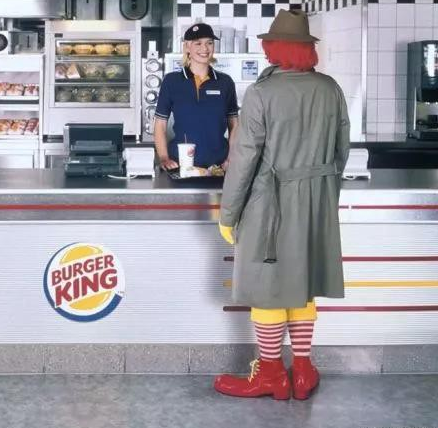We all hate a troll don’t we? Internet ‘trolling’ has traditionally been something that brands were afraid of, or have had to adopt plans for how to deal with it happening to them, however now it is being used as a particularly powerful marketing tool, especially for challenger brands.
Trolling: ‘‘The art of deliberately, cleverly, and secretly pissing people off, usually via the internet, using dialogue.’’ The Urban Dictionary
Call it what you will, the practice of ‘trolling’ has been turned on its head and is now being used as a disruptive and effective marketing strategy that speaks to a new generation of people who use social media constantly, both young and old.
It’s a means of direct and immediate communication and it creates a much coveted, totally interactive engagement with consumers.
There are three common methods of trolling that brands are using, they are trolling their competitors, trolling the public, and/or trolling celebrities and public figures.
When executed correctly this is probably the most inexpensive marketing tool out there.
Risk -V- Reward
Done well, troll marketing can be an incredibly effective way of generating a buzz around your brand – and can potentially lead to major virality. Done incorrectly, troll marketing can still lead to virality…but not in a good way.
Before engaging in any ‘troll marketing’ campaign it’s important to weigh up the risks versus the potential rewards for your business.
These days consumers are bombarded with so many marketing messages that it’s becoming increasingly difficult for a brand to stand out, yet there are so many companies trying different methods to make an impact. This is easier for big corporations that spend fortunes on marketing, but not so easy for startups and small businesses with limited budgets and reach.
This is why sometimes the risk of causing a controversy can be worth the reward of getting your brand noticed – especially for smaller challenger brands.
Below we will show you some of the best and worst examples of trolling from small, medium and large brands and show you how you can implement this into your own strategy.
1. Trolling The Competition
Trolling the competition has been around since the dawn of time, long before social media gave everyone a platform. This basically takes the shape of using your competitors perceived weaknesses to promote your own strengths.
These are usually humorous in nature but the big risk is if they turn nasty, or if your competitor bites back and puts you in your place. This being said, once you have your facts correct, this can be a very effective marketing tool for businesses of all sizes as the below examples show.
Ben Dunne Gym’s V FLYEFit

We have to hand it to Ben Dunne, he certainly knows how to make a splash and is not afraid to take on the competition head on. His most recent radio ad campaign isn’t to everyone’s liking but is more than memorable for anybody who has heard the ads.
In the ads, which are voiced by Ben himself, he calls out Flyefit by using their prices as a stick to beat them with.
“Can you hear me FLYEFit” He says as he proceeds to call them out on price, “Ben Dunne Gyms are 50% cheaper than FLYEFit” and on their locations “Why won’t FLYEFit open in the Blanchardstown area like Ben Dunne Gyms? I believe in healthy competition”
We haven’t seen a retaliation from FLYEFit as of yet but have heard plenty of people talking about the campaign both on and offline:
Brewdog V Everyone
Brewdog are certainly not considered to be a shrinking violet of the beer industry and have executed some of the most impactful marketing campaigns possible for a relatively small player within such a big industry.
One of its latest campaigns is an attack on rival brewers with a campaign targeting and mocking the taglines of Budweiser, Carling, Fosters and Stella.
The campaign takes the overall consumer scores of popular lagers from the popular website RateBeer.com, juxtaposing them with the superior score given to Brewdog’s Punk IPA. The ads claim the Indian pale ale boasts a rating of 97/100, while Budweiser, Carling, Fosters and Stella score 0/100, 1/100, 3/100 and 9/100 respectively.
The accompanying copy is a direct dig at the competitors’ ad slogans. Executions include ‘Wassup, Bud?’ and ‘Good Call, Fosters?’

Burger King V McDonalds
Possibly the most well known of all the trolling campaigns is Burger King’s long running but light hearted feud with its much larger rivals McDonalds.
One of their most recent campaigns takes advantage of McDonalds recent court case against Irish fast food chain SuperMacs where they lost the European trademark rights for the term ‘Big Mac’. To ‘celebrate’ this, Burger King released a new menu in Europe of “Not Big Mac’s” which really rubbed salt into the wounds!
There have been plenty of other examples that can be seen here including our personal favourite McWhopper campaign for World Peace Day when Burger King tried to make peace with their biggest rivals.

2. Trolling The Public
This is probably the most risky variant of troll marketing as you are taking the piss out of the very people that you are expecting to purchase your product or service. It might seem like a strange move but if you are not malicious while poking fun it can endear your audience to you even further.
Spotify
To celebrate the end of 2017, Spotify created reflection videos and statistics that their users could review in the last few weeks of the year. But their New Year’s campaign didn’t end there. Spotify took the data they compiled and turned it into giant billboards making fun of their own consumers listening habits and took trolling off the internet and into out of home advertising.
The twist? The “2018 Goals” ad campaign made fun of their consumers’ music habits and took troll marketing beyond the internet. It was a risky play by Spotify but the campaign was a huge success, gaining mass consumer and media attention both on social media and within traditional publications.

The White Moose Cafe
The White Moose Cafe are a great example of how a small brand can gain widespread national and international awareness through trolling or as their owner Paul Stenson calls it ‘Outrage Marketing’. Now, this level of public trolling is not for everyone as you will need a certain level of thick skin and wit to handle the level of ‘interaction’ that will come your way, but there is no doubt it has worked for The White Moose Café as is evident in the fact that the small Café in Dublin has hundreds of thousands of followers across social media giving it the platform to promote its business.
They have had numerous viral campaigns including, but not limited to, declaring war on vegans, calling out bloggers who look for freebies, and most recently imposing a tax on screaming children.

You might not like it, but this has generated great for publicity for a local business.
3. Playing the Troll with Public Figures
This one is especially powerful for small brands looking to piggyback on the fame and celebrity of others to gain notoriety. There is potential big rewards if the public figure themselves engage with your campaign and also if their supporters/opposers find it to be something worth engaging with.
Try not to be overly nasty here however as nobody likes a bully.
JOE Media UK
When Irish media powerhouse JOE were starting their breakthrough into the UK market they used some of the most innovative and impactful video content you are likely to see on the internet. They took aim at politicians, footballers and celebrities alike which some hilarious content that gained them mass awareness and helped build an initial audience on social, which is now well into the millions, who would subsequently become loyal readers and consumers of their content.
Sports Example:
Politics Example:
Hamptons Floor Store

Here’s another example of a small brand going big with it’s trolling. Hamptons Floor Store in Crumlin know it’s target audience would appreciate their trolling of José Aldo after he was knocked out by local hero Conor McGregor but they couldn’t have imagined this bill board would have taken them all the way to the Conan O’Brien Show in the USA.
How Not to Troll
Playing the troll doesn’t always go well however, take a look at this hilarious mistake by LG in France when they tried to mock Apple when it came to light that their new iPhone 6 was liable to bend under minimal pressure.
The tweet can be translated as – “Our smartphones do not bend, they are naturally curved.”

Haven’t noticed the mistake? Take a look at the bottom right corner which shows what device the tweet was sent from!
Conclusion
While this type of marketing can be extremely for brands we would recommend a large serving of caution before engaging. Weigh up if this is something that suits your brand tone of voice and if you are prepared to take risks. If this is something you want to do, try to keep these points in mind.
Be ready for the types of responses you will likely receive and prepare your answers in advance
- Recognise your opportunities around trending topics. Don’t troll randomly
- Communicate in a real time manner. How do your audience communicate with each other? Gif’s, meme’s?
- Don’t be nasty. Push the boundaries but don’t be a bully
- Be ready for and accept the potential for a backlash
- Focus on topics that are debatable as opposed to polarising and alienating
Keep these points in mind and put yourself in the mind of the consumer and you can’t go too far wrong. Best of luck and don’t blame us if you make a mess of it!


